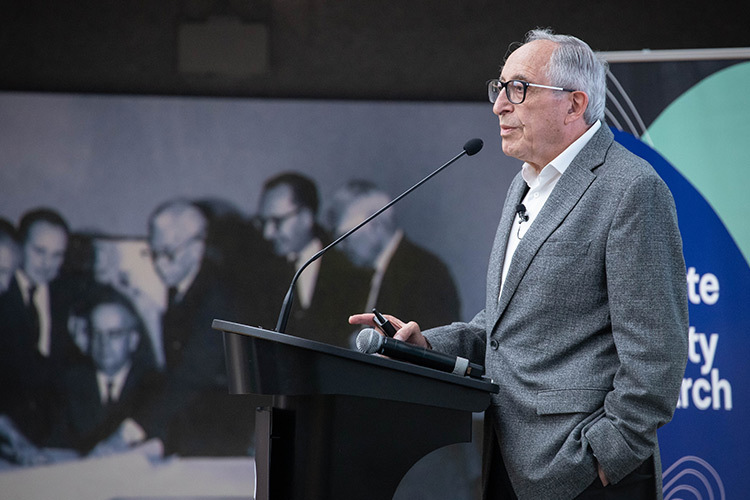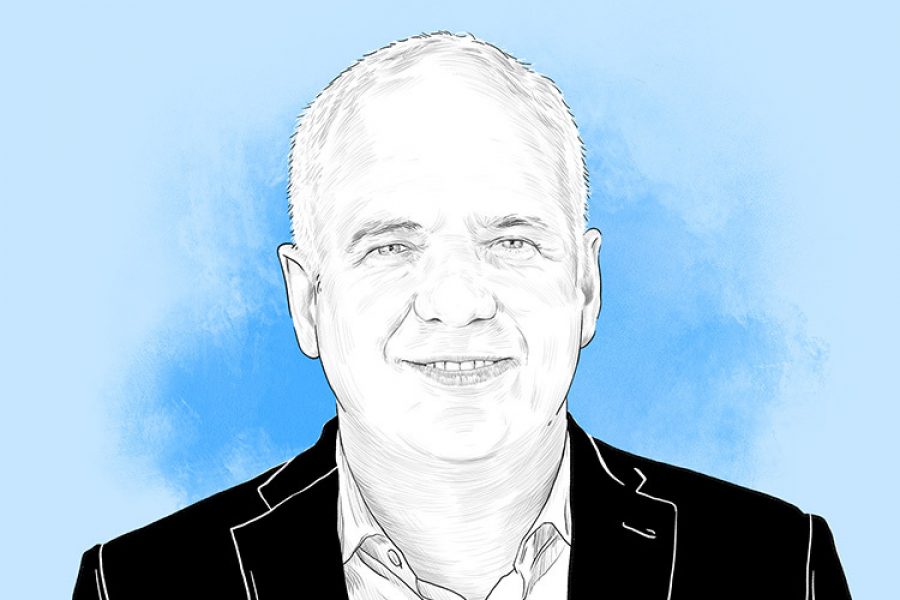The burden of diseases related to obesity could be reduced with adjustments in the diet and lifestyle of Mexicans, which for a long time have been primarily sedentary. Preventive measures around nutrition could prevent up to 75% of heart disease, vascular accidents, and type 2 diabetes, as well as 40% of cancers.
David Kershenobich Stalnikowit backs up these data. He is a doctor and researcher who graduated from the Faculty of Medicine at the National Autonomous University of Mexico (UNAM) and specializes in the study of the liver. From 2012 to 2022, he was director of the Salvador Zubirán National Institute of Medical Sciences and Nutrition (INCMNSZ), listed as one of the best high-specialty hospitals in the world.
During the first day of the second International Conference on Obesity Research, he explained the relationship between obesity and other non-communicable chronic diseases. According to him, these illnesses —such as diabetes, kidney failure, cancer, and hypertension— are one of the main causes of death and disability in Mexico.
He also emphasized the importance of promoting epidemiological research, basic research, and clinical research to attack obesity from different angles that complement each other.
Obesity and chronic non-communicable diseases
The researcher highlighted some of the most important aspects of this problem in an exchange of questions and answers with the audience, and in an interview with TecScience.
—What does the obesity problem look like in Mexico and what are the practical steps that we must follow in order to overcome this silent pandemic?
—Obesity is a very significant problem in Mexico and the world. We are seeing this in Mexico; we have an overpopulation of patients with body mass indexes that imply overweight and obesity.
For this to change in a significant way, I think there are several things to do.
One, we need to promote scientific research so we can identify risk factors and how to modify them.
The second aspect is designing cohort studies that allow a better understanding of what is behind obesity in patients and how it progresses over time.
And perhaps the most important one is to understand that not all people with obesity are the same and that genetic factors, metabolic factors, and environmental factors are involved. So, the design of a public health structure must consider these different factors and that is why cohort studies become very important.
Obesity is a disease
According to Kershenobich, it is important to understand that not all individuals with obesity are sick; there are two large groups of patients: metabolically healthy obese people and metabolically unhealthy obese people.
—Which of all the causes behind the increase in obesity in Mexico should we attack first?
—I think it is very difficult to say which is the most important; what matters is that the area of research that is addressed is done with quality. We should investigate in depth how one factor contributes to the development of obesity because I believe that they are all very important. We must seek quality.
—How can we avoid stigmatizing obesity without failing to explain the importance of living balanced and healthy lives?
—What is important is the “metabolic dysfunction” that needs to be investigated. If patients have a metabolic dysfunction associated with being overweight, it is most likely that they will be overweight because the frequency of chronic non-communicable diseases in Mexico is very high and is responsible for 75% of mortality in the country. So, that makes us think it is not the best thing to be overweight and that correcting nutrition can prevent many of these diseases.
A diet that is high in carbohydrates, fats, and sugars implies risks for any person.
That is why it’s important to have cohort studies that allow us to see the evolution of individuals who are overweight or obese. It may be that an individual with these characteristics is healthy right now, but we don’t know how his or her health will be in 10 years.
There is no doubt that people with obesity are at greater risk of developing many types of diseases. So, public policy must be focused on trying to reduce the frequency of obesity.
—Could we say that eating a balanced diet that is high in fruits and vegetables can prevent or reduce the risk of certain types of cancer? Is the Mediterranean diet a better diet?
—This is a very difficult question, but yes, the Mediterranean diet is definitely better than the Western diet in terms of the inflammatory response.
If there is a direct relationship between the type of diet and the development of cancer, I believe that this is a very, very important avenue of research.
There is no doubt that people with obesity have a higher frequency of cancer and metastasis; what must be explored is the factors that really affect this higher frequency.
Future of obesity research in Mexico
—What is the importance of specialized centers such as the Institute for Obesity Research?
—Proposals such as this center from Tecnológico de Monterrey must extend beyond the institution; there must be active cooperation with other universities, like UNAM, the Autonomous University of Chapingo, the National Polytechnic Institute (IPN), and the National Institutes of Health. Establishing active networks of cooperation to address such a complex problem becomes very important.
—How can we design public policies that really have a lasting impact on obesity?
—I believe that we need a solid basis in order to design a public policy. We need an epidemiological database, but not just that; it’s very important to store serum and to store biopsies, even just in cohorts that could be followed for 10, 20, or 30 years. I believe that in order to plan a public policy in the long term, it is necessary to design follow-up cohorts for different types of information.


















